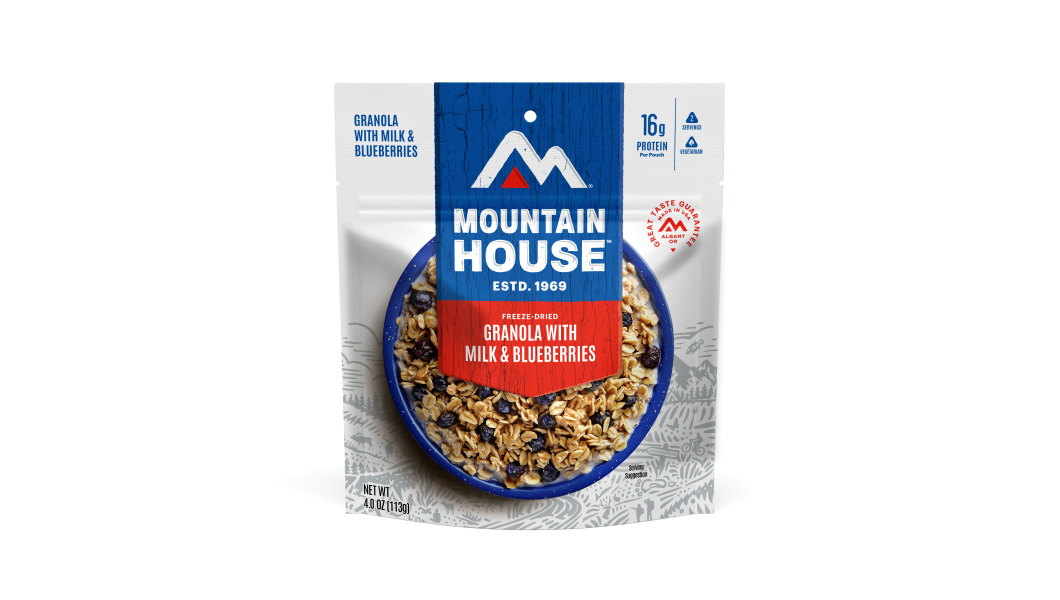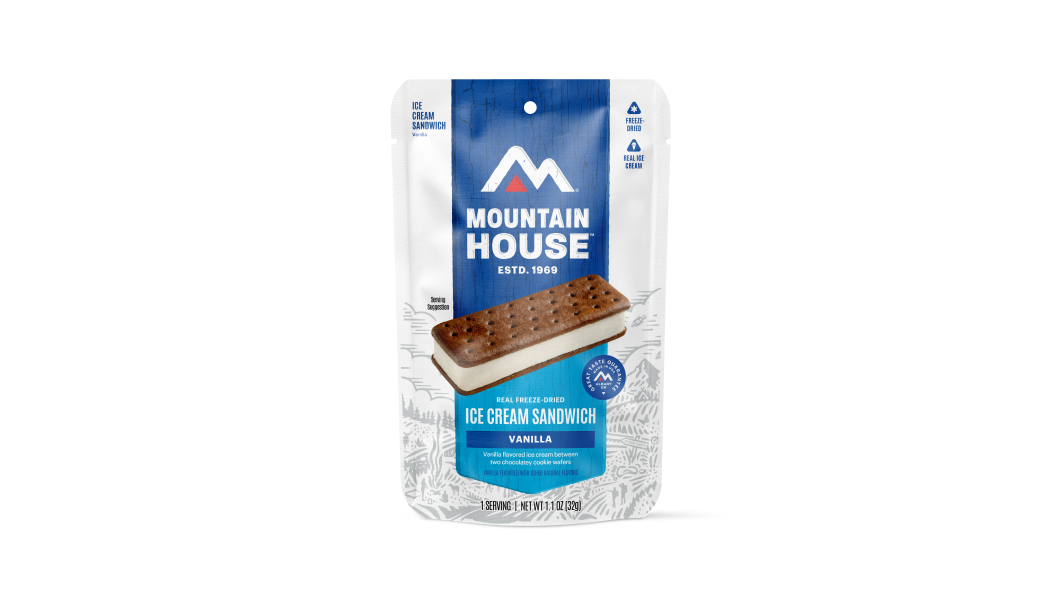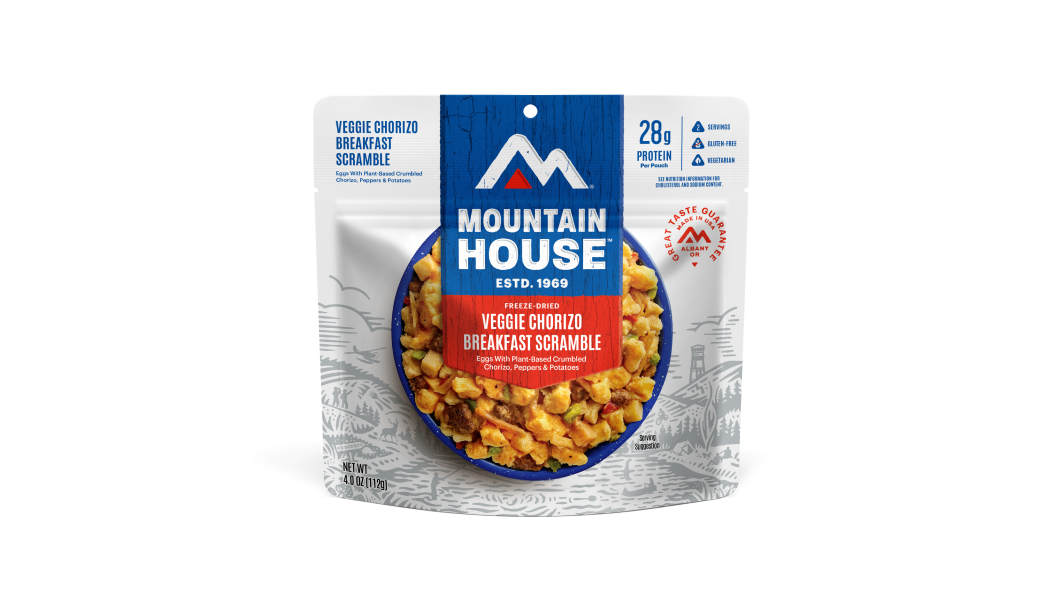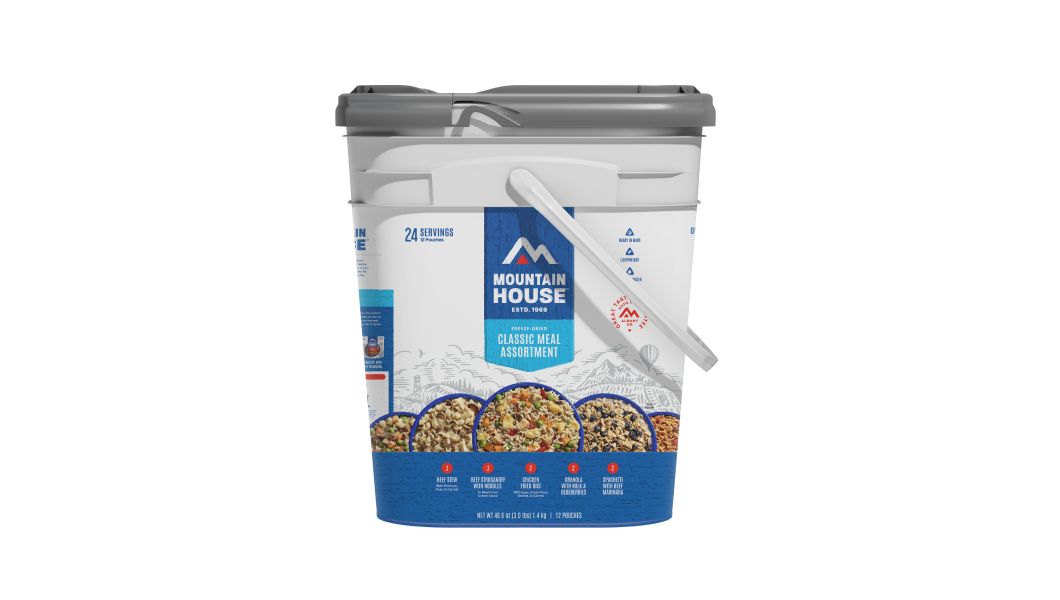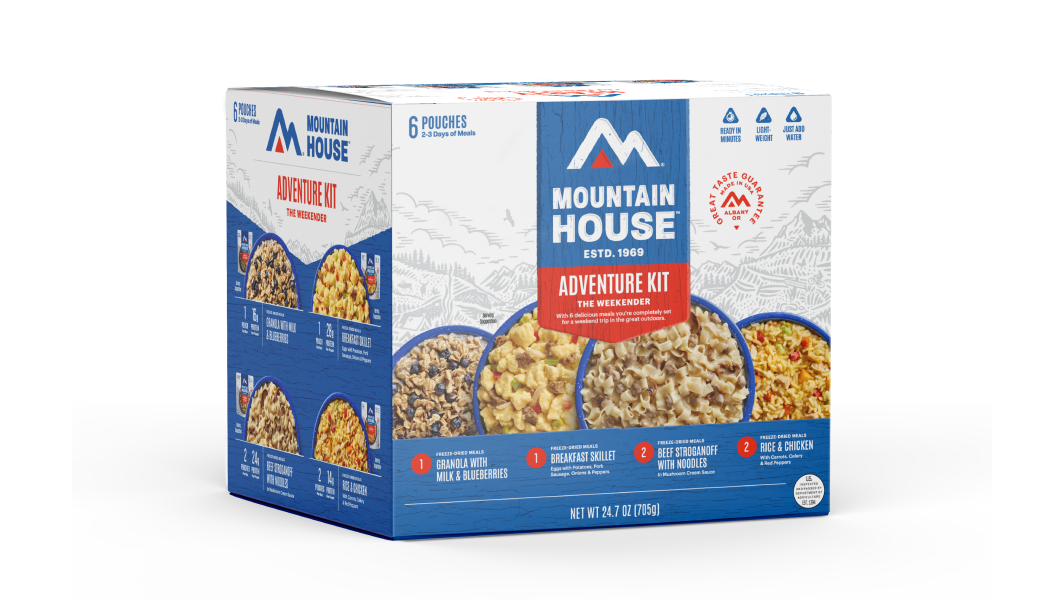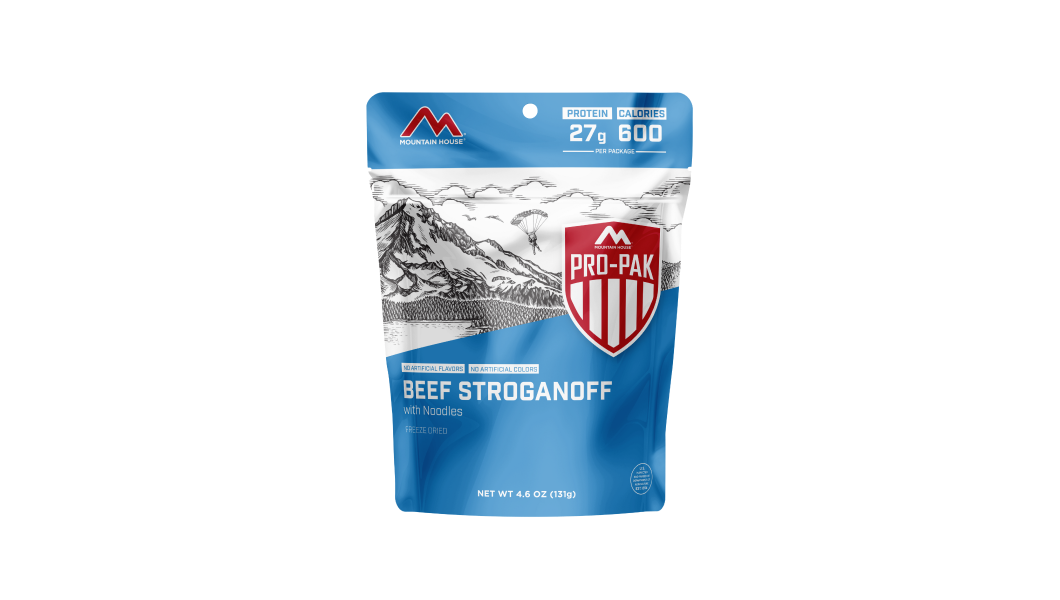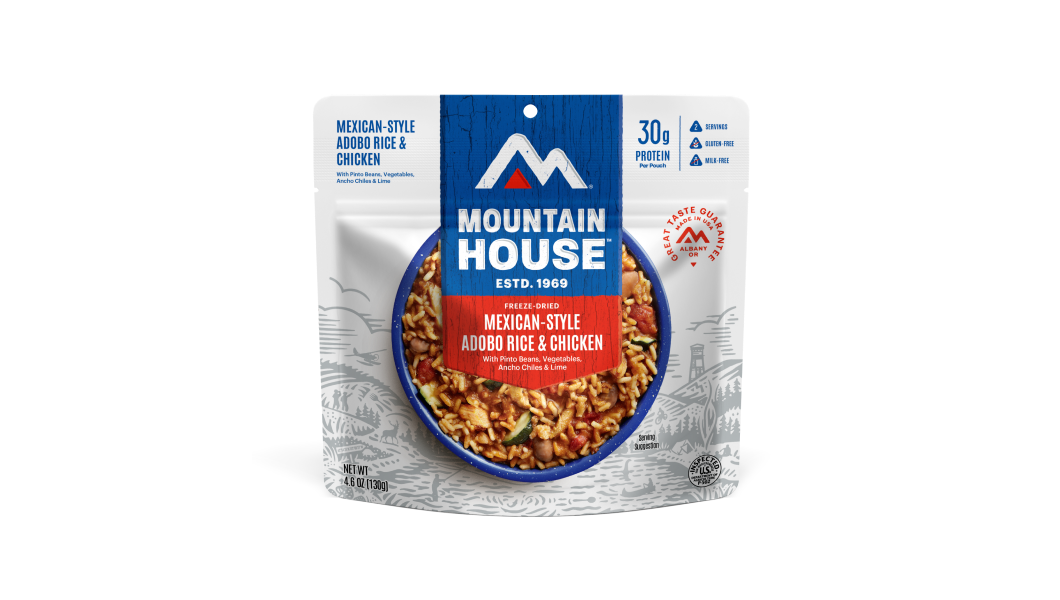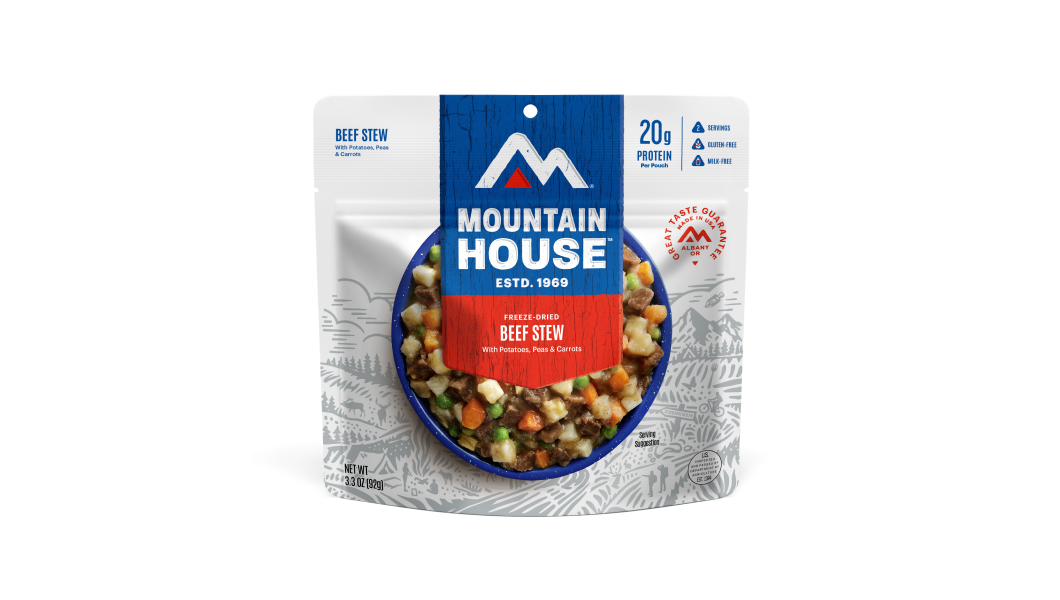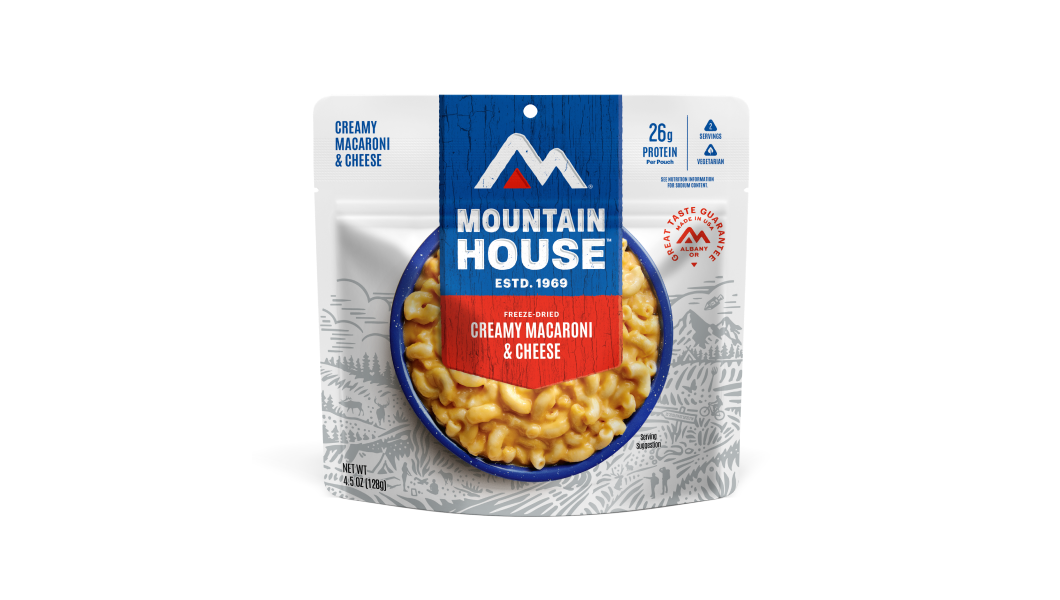Inspired for an Adventure? Check out Beef Stroganoff - Pouch and Beef Stew - Pouch
Free Ground Shipping On All Orders
Over 2,100 Reviews
Add description, images, menus and links to your mega menu
A column with no settings can be used as a spacer
Link to your collections, sales and even external links
Add up to five columns
Add description, images, menus and links to your mega menu
A column with no settings can be used as a spacer
Link to your collections, sales and even external links
Add up to five columns


Having a solid food plan for your upcoming backpacking trip is key to keeping your legs moving and your spirits high. We’ve recently shared tips on creating a camping meal plan, and today, we’re zeroing in on backpacking-specific meal planning.
Remember, eating is one of the deepest pleasures of the backpacking experience: Your trail-weary body craves food to an almost spiritual degree—the kind of well-earned, satisfying, pure hunger that a couchpotato or car-commuting day just doesn’t inspire.
Don’t let anybody tell you backpacking food needs to be bland, barebones, exclusively utilitarian fare: There’s no reason you can’t chase bold flavors in the backcountry. Delicious meals don't have to be complex or fancy in order to taste amazing. And while nothing seasons food quite like a long day on the trail, a stunning wild vista as your dining room comes in a very close second.
Backpacking Nutrition Basics
A backpacking meal plan needs to take into account a few fundamental realities. First, you’ll likely be burning a lot more energy than you do at home, so your caloric demands are going to be greater. A backpacker typically needs 3,000 to 5,000 calories per day, though exact requirements can vary based on your weight, metabolism, terrain, and overall exertion level. This translates to consuming roughly 1.5 to 2 pounds of food per day. But remember, the calorie benchmark matters more than the food weight, so study those nutrition labels and prioritize calorie-dense foods that won’t weigh down your pack.
Most of your calories should come from carbohydrates, the body's most ready source of energy. Think pasta, whole grains, potatoes, dried fruit, pita bread, and oats. Protein is also key, coming from trail-friendly sources like meat, beans, nuts, and powdered milk. And out in the wild, fats are your friend: calorie-packed and slow-digesting, foods like butter, olive oil, cheese, and eggs, provide a lasting energy source that will keep you powered up for long stretches.
Of course, another of those realities—the one that intimidates many beginner backpackers—is the fact you need to carry all those days of food around on your own two shoulders (though you may well be restocking if you’re on a very long thru-hike). Therefore, you’ve got to be strategic about caloric content, bulk, and packability of your ingredients and meals.
Freeze-dried meals are a backpacker’s best friend: lightweight, easy to prepare, nutritious, and designed to pack a powerful punch of energy without weighing you down.
A Sample 7-Day Backpacking Meal Plan
Here’s a sample 7-day backpacking meal plan to use as an inspirational blueprint, tweaked naturally to your own tastes!
Snacks Throughout: trail mix, cheese, granola bars, protein bars, sunflower seeds, hard chocolate, salami, beef jerky, fruits and veggies (an orange, sliced carrots, apples)
Desserts: Instant cocoa, chocolate-covered almonds, Mountain House Ice Cream Sandwich
DAY ONE
Breakfast: Fuel up at that diner near the trailhead!
Lunch: Bagel, cheese, grapes
Dinner: Mountain House Chicken Teriyaki with Rice
DAY TWO
Breakfast: Mountain House Breakfast Skillet
Lunch: Summer sausage, cheese, almonds
Dinner: Mountain House Chili Mac with Beef
DAY THREE
Breakfast: Mountain House Granola with Milk & Blueberries
Lunch: Tortilla, powdered hummus, dried figs, summer sausage
Dinner: Mountain House Pasta Primavera
DAY FOUR
Breakfast: Mountain House Scrambled Eggs with Uncured Bacon
Lunch: Tortilla, powdered hummus, banana chips
Dinner: Mountain House Beef Lasagna
DAY FIVE
Breakfast: Mountain House Biscuits & Gravy
Lunch: Dried fruit (like figs), banana chips, almonds
Dinner: Mountain House Freeze-Dried Pepperoni Pizza Bowl
DAY SIX
Breakfast: Mountain House Veggie Chorizo Breakfast Scramble
Lunch: Tortilla, peanut butter, trail mix
Dinner: Mountain House Korean Style Beef with Rice and Veggies
DAY SEVEN
Breakfast: Mountain House Granola with Milk and Blueberries
Lunch: Beef jerky, almonds, veggies
What to Keep in Mind When Creating Your Own Backpacking Meal Plan
While the sample plan above can give you plenty of meal ideas, here are some important tips if you decide to create your own meal plan:
- High-calorie, nutrient-dense foods – Pack 3,000–5,000 calories/day with a balance of carbs, protein, and fats.
- Dietary adjustments – Plan meals for allergies, dietary restrictions (like gluten-free), and personal preferences.
- Lightweight and packable – Opt for freeze-dried meals, trail mix, jerky, and nut butters.
- Easy prep – Choose quick-cook or no-cook foods like oatmeal or instant rice.
- Variety and quick snacks – Pack dried fruit, bars, nut butter packets, and energy chews.
- Hydration and electrolytes – Bring electrolyte packs to replenish lost minerals and avoid dehydration.
If you don’t want to worry about creating a meal plan, build your own 7-Day Mountain House kit for a stress-free week of delicious, lightweight, and ready-in-minutes meals. Mountain House meals are as backpacker-friendly as they come on every level—most definitely including the packability level.
Not all the food items you may be bringing are as pack-ready as ours, so it’s worth repackaging those bulkier grocery store items in more lightweight, space-efficient sealable plastic ziplock bags or tight-closing containers. In larger, labeled bags, you can partition these packaged foodstuffs by meal (all breakfasts together, say) or by day, often the most logical route.
The Rhythm of Meals in the Backcountry
You may want to make breakfast something quick and easy to prepare so you can take advantage of cool morning weather or an early start for putting in some quality time on the trail. If you’ve got more of a leisurely gameplan, then a hot cooked breakfast savored along with some instant coffee or tea can be a right-off-the-bat highpoint of the day.
Many backpackers make lunch a casual, snacky sort of affair, enjoyed at some scenic or shady stopover on the trail. Rather than cracking out the stove and cooking something for the midday meal, it’s easier to just reach for the trail mix and dried fruit, or the pita bread and peanut butter, or the beef jerky and cheese. If you’re taking plenty of snack breaks during the day’s hiking, you may well not really have a formal lunch of any kind.
Once you’ve set up camp, dinner’s a chance to kick back and reflect on the day’s adventures over a warm, nourishing meal. With a Mountain House entrée, there’s no more cooking hassle involved than boiling water.
More likely for a multiday trek, you’re going to know in advance of longer, harder days and shorter, easier ones, and that should influence meal planning. Winding down a pound-out-the-miles day, or the evening after a demanding summit hike, you’re going to want something quick and simple to prepare for dinner. Breakfast ahead of such a packed, on-the-move day ought to be similarly fast to whip together, and should deliver a lot of bang for your buck (think high protein!), given the energetic demands in store.
Keep perishability in mind, too—maybe eat those bagels, eggs, and cheddar cheese earlier rather than later. (Not an issue, mind you, with Mountain House meals: freeze-dried goodness with the industry’s longest shelf life!)
Planning Meals with a Group
Of course, meal planning gets a little more complex (and more fun) when you’re not going it alone. If you’re backpacking with others, see if the rest of your party wants to collaborate on some of the trip menu. Some groups like to divvy up meal responsibilities, or maybe you’ll just be all pitching in on dinners, say. If you are pooling resources this way, you’ll naturally want to hash out logistical details such as food preferences, dietary restrictions, and allergies ahead of time.
Break down the days of your trip by breakfasts, lunches, dinners, and snacks, keeping that basic daily caloric window in mind. If you’ve got a pretty unvarying trail and itinerary, scheduling day-by-day menus may be as straightforward as randomly dividing up your list of planned meals amongst your backpacking group.
Fuel Your Next Adventure with Mountain House
Planning meals for a week-long backpacking trip doesn’t have to be a challenge. With the right balance of nutrition, convenience, and taste, you can stay energized on the trail without the hassle of heavy or complicated meal prep. Whether you need a hearty breakfast to kick-start your day or a protein-packed dinner after a long hike, Mountain House has you covered.
Shop our lightweight, freeze-dried meals that are designed for adventure—just add water, and you’ll have a delicious, high-calorie meal in minutes. No matter where your journey takes you, you can count on Mountain House for reliable, easy-to-pack nutrition that keeps you moving.

How to Hike Safely in Winter & Cold Weather

5 Wilderness Survival Situations: Skills and Strategies to Stay Safe


Stay Hungry for Adventure
Sign Up for Delicious Outdoor Meals & Exclusive Offers!
By clicking ‘Join Now’, I agree to the Terms of Service and Privacy Policy.


Join the adventure
©2025 Mountain House — All Rights Reserved.
Your Cart is Empty
Continue ShoppingYour Cart
Subtotal
$0.00
EXPRESS PAYMENT METHODS AVAILABLE IN CHECKOUT
Taxes and Shipping Calculated at Checkout
Your ExpertVoice deal.
$[Deal Price]
$[Original Price]
Discount applied at checkout.
On sale now — lower than your ExpertVoice discount.
Not eligible for ExpertVoice discount.
